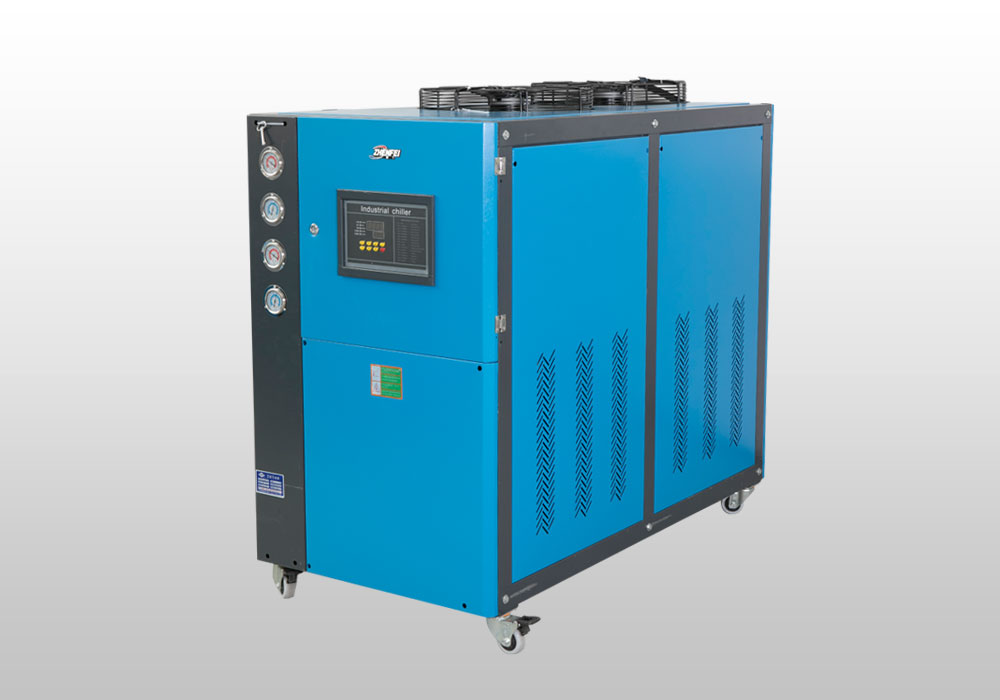Chillers
Industrial chillers are used for a number of processes in the manufacturing, mining, food and chemical processing industries. They can be either part of a large machinery system or stand alone units. A chiller can be made out of several different materials such as metals, polystyrene and plastics. Their shapes can vary widely from being very simple with no cooling cavity to extremely complex with a variety of cooling compartments. The chillers can also be made to fit specific industrial applications.
An industrial chiller is a device that removes heat during production processes from liquid or gaseous substances. They have the ability to reduce the temperature of the substances inside a working system. They do this by conduction or convection. Chiller designs must meet certain guidelines in order to be used in various production processes. Production processes like the cold forming or press grinding require specific chillers for these kinds of operations. This is because the speed of cooling is very high for these processes and it causes damage to machining tools.
One common industrial chiller application is found in the beverage industry. There are two types of chillers, thermal and pressure. Thermal chillers use electricity to generate a low temperature by conduction or convection. Pressure chillers use high-pressure sodium water to cool volatile components in the process. They can also be powered by gas, oil, or vacuum.

Zhenfei industrial chiller does not only remove heat from the beverage process, but it also removes moisture, which is a concern in some beverage processes. The chilled liquids are cooled at very high temperatures before they are sent into the fermentation tanks. This is to reduce the rate of tangling and increase the contact time between the flavor-adding ingredients. In addition, this cooling system also removes sulfites that are produced during the fermentation process. The final step is the drying of the products, which should always be done at very low temperatures.
A good chiller should be able to maintain the appropriate temperatures for the anticipated cooling capacity of the equipment. The heat rejection capacity of the chiller must also be taken into consideration. A heat exchanger may also be included in the cooling system. Heat exchangers transfer the heat from the inside of the machine to the outside of it. A high heat rejection capacity means higher energy costs because of the cooling of the product at a higher temperature.
High-performance chillers need high-quality parts to ensure their long-term operation. The heating element of the chiller should be efficient enough to maintain the required levels of heat exchange. It should also have a high compatibility with the other important components in refrigeration such as condenser, expansion vessel, and evaporator. Industrial chillers are more complex than personal refrigerators. A good manufacturing company should make every effort to produce excellent industrial chillers.
In a two-stage chiller, the first stage containing water and vapor compression is followed by a dry air compression stage. This two-stage chiller has the capability to chill water and vapor, but not air. There are some advantages of using a two-stage chiller such as higher cooling capacity and greater energy efficiency. A two-stage chiller can either run on water or on ice, depending on availability.
In the evaporator chillers, heat is extracted through the evaporator coil. A vapor compression chiller contains a single, fixed evaporator coil. The second chiller in the system contains either an air-cooled condenser or an air-mist condenser. In the chillers having both air-cooled and an air-mist coil, it is generally believed that the air-cooled coil results in better regulation of internal temperatures. Chillers having a single fixed evaporator coil and an air-cooled condenser are more efficient than those having both.